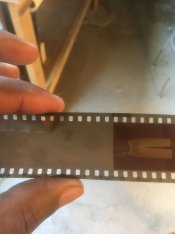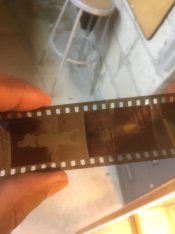Hi all. I am wondering if anyone is a photo engineer and can Identify some reasons for this cast happening on this portra 160 I developed for someone. I was using kodak lu devloper, Fuji N2 Bleach 3 and, Kodak RA Fixer.
Is it an issue with chemistry, film keeping etc?
Some examples can be found here (when I try to upload a file it says file is too big)
The first folder is the scans without scanner adjsutments
and the second folder is where I tries teaking the colors a bit
https://www.dropbox.com/sh/1n78eyolo6380we/AAD2jNc7CP4ggPP_5eRQ8qLNa?dl=0
There are several doubts revolving around a number of reasons.
- The first reason from my point of view is the camera used for shooting, I doubt that its light meter only has some of its sensitivity and that appears in most of the distant photos.
- The film, perhaps, was kept in a hot place (regardless of whether it was fresh or not), and perhaps it was also old and did not have any tolerance for any decrease or increase in lighting.
- The thermometer you are using may have some kind of defect, and this has happened to me repeatedly, and now I no longer rely on one thermometer, I must use an electronic one and the other is lupus, I do not rely on electronic only or lupus only, I must rely However, the lupus thermometer is not immune to failure and neither is the electronic thermometer immune to failure and this malfunction can happen when the developer is somewhat old or somewhat worn out.
- Perhaps the developer is a bit old or a bit worn out, while the film is also not at its best.
- Perhaps the temperature of the process was not constant throughout the development period, yes, you were probably sure that the temperature of the developer was 38 degrees, but you may have neglected to check the temperature of the water in the immersion basin (that vessel in which the development tank is placed during the development process so that it is surrounded by with warm water at the same temperature as the developer) and one or more temperatures may have been lost because of this.
- Perhaps there is an increase in development, and I personally suggest a somewhat strange reason, which is the wasted time between emptying the tank from the developer and washing the film. Sometimes this time is rather long and sometimes we slow down in speeding towards the faucet and sometimes we do not notice that it It is worthwhile to wash the film immediately without wasting any time so that the film gets rid of the developer remaining on the surface of the emulsion quickly, as this developer is still interacting with the emulsion and is still developing, but at a lower rate of course.
- Also, I always recommend the step of stopping the reaction with any mild acidic solution (food vinegar 2% with water) even if it is for half a minute, trust me, this step will have some good effect, I pour the stopping solution on the film after washing it quickly and come back I empty the stop solution at the same moment immediately and go back and re-wash the film with tap water several times, no less than 10 times and maybe 20 until I make sure that the film is completely rid of all traces of the developer and all traces of the stop solution.
At that moment, I can open the tank with a clear conscience and mind and bleach the film in the light of the room and also do the fixing in the light of the room.
Sometimes some causes and bugs are intertwined together and unite to produce a problem, so it is difficult for you to be able to clarify your hand on the real reason for the occurrence of that problem.
This is a sample of my photos using chemistry that was made by hand from scratch and used expired film since 2014.













